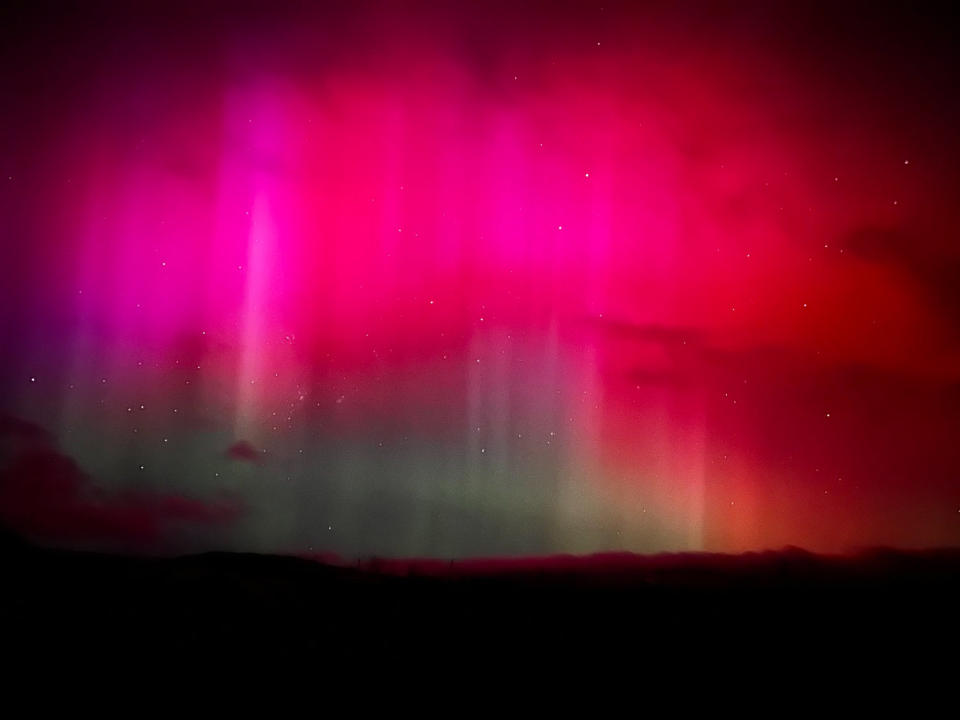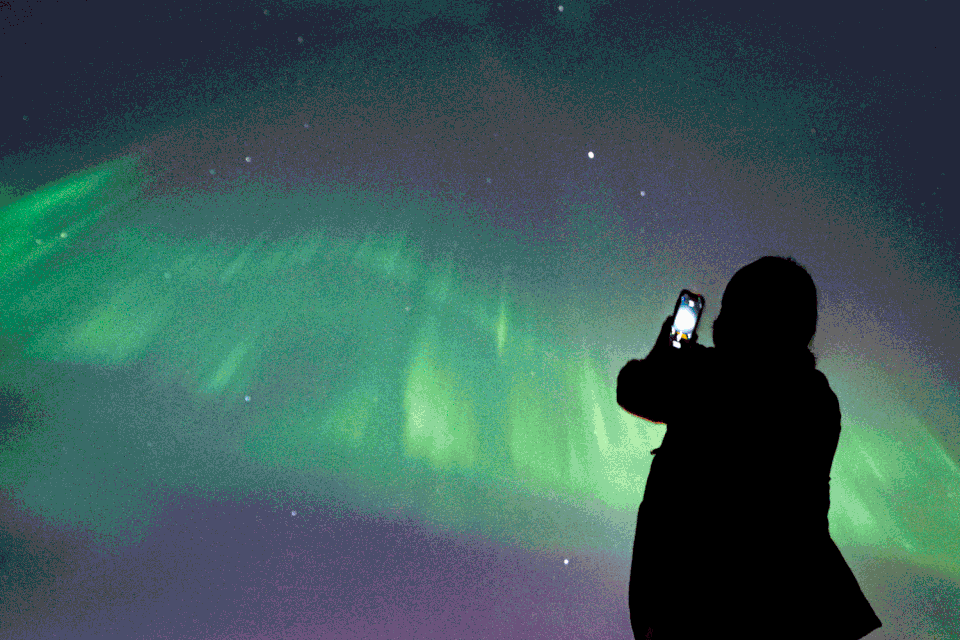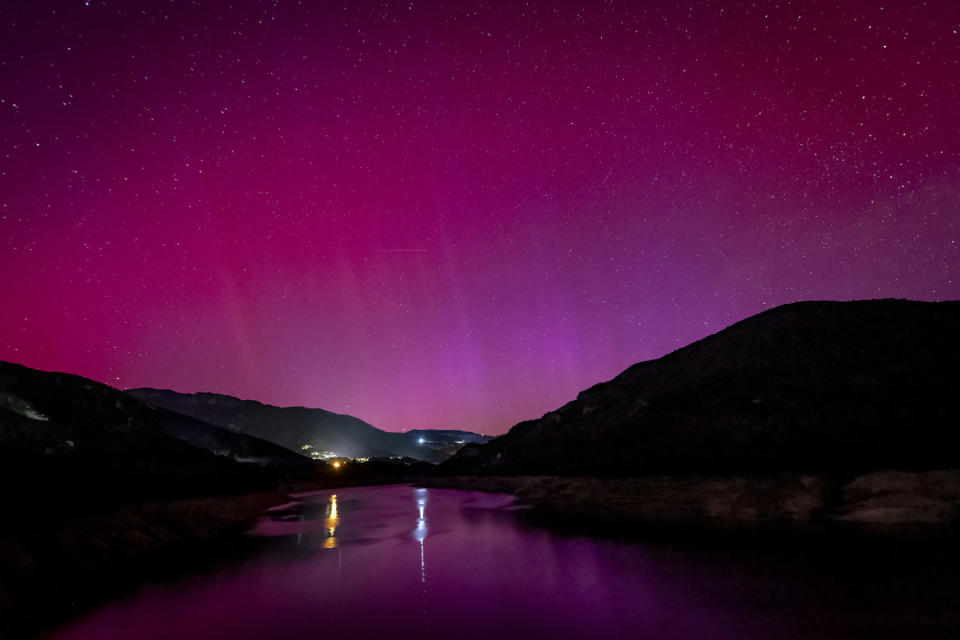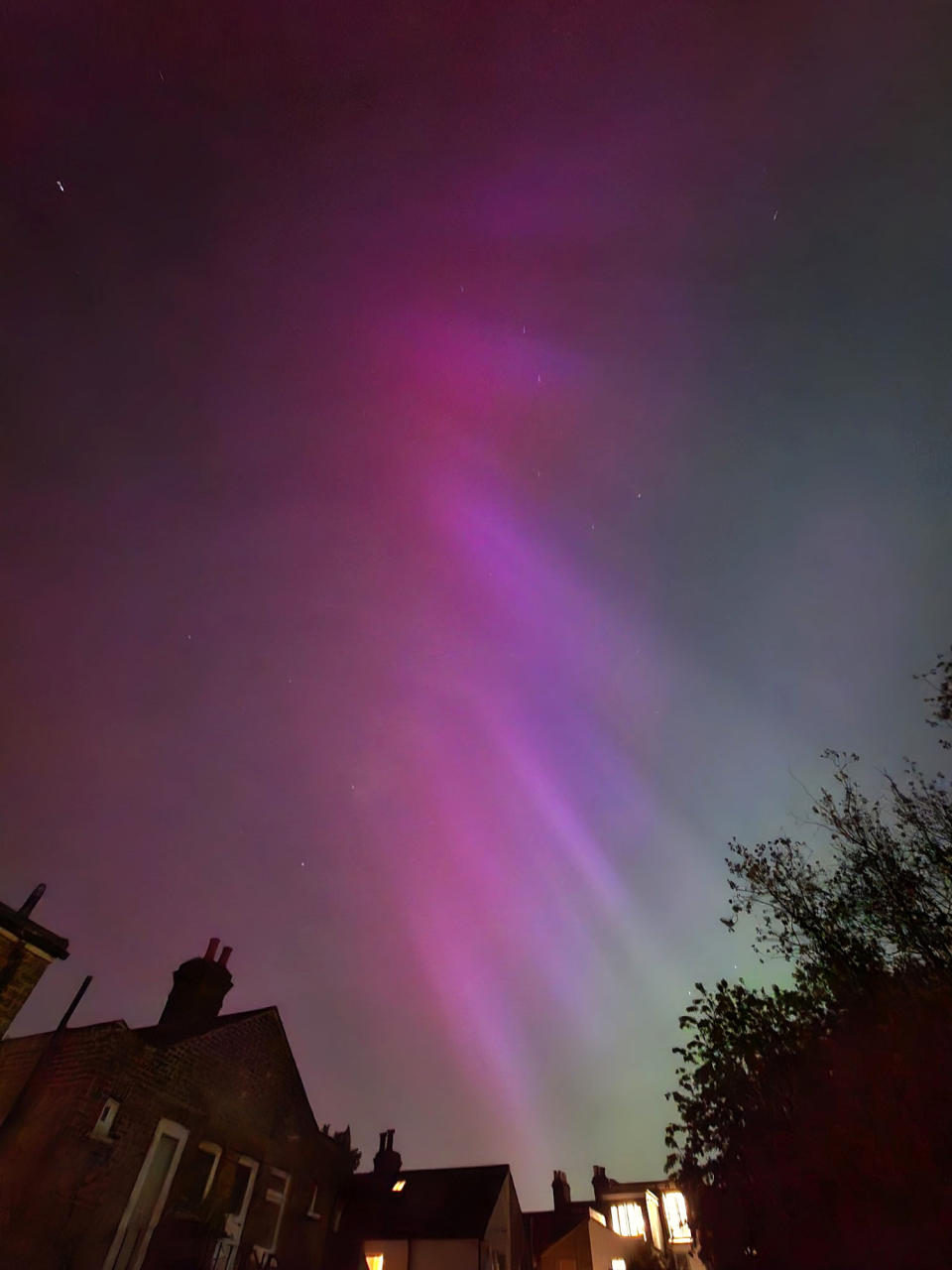Northern lights illuminate the US sky in rare geomagnetic storm — where to see them tonight
Due to a severe solar storm, the northern lights were visible across several regions in the United States May 10 — and the rare phenomenon could continue throughout the weekend.
The National Oceanic and Atmospheric Administration’s Space Weather Prediction Center issued a severe geomagnetic storm warning May 10 for the first time since 2005.
The agency said in an update on X May 12 that "severe to extreme geomagnetic storming" is possible for Sunday evening as well.
"The ongoing geomagnetic storm will likely once again become more intense later today," the agency said, meaning the northern lights will be "more widespread and seen at lower latitudes."

The Space Weather Prediction Center originally shared on X that a coronal mass ejection was “anticipated to merge and arrive at Earth by late on May 10 or early on May 11.”
A coronal mass ejection is an “eruption of solar material,” and when it nears Earth, it can result in a geomagnetic storm. This can supercharge the northern lights and make them visible farther south than usual.
The Space Weather Prediction Center stated that the brightly colored ribbons of light known as the aurora borealis could be seen over the northern region of the United States and “as far south as Alabama and Northern California.”

The geomagnetic storm will continue through "at least" Sunday, according to the agency.
“The threat of additional strong flares and CMEs will remain until the large and magnetically complex sunspot cluster rotates out of view over the next several days,” the agency said.
The rare event is not dangerous to humans, but it can impact technology. In a tweet on May 11, the agency said that the storm appeared to cause reports of “power grid irregularities” as well as “degradation to high-frequency communications and GPS.”
Here’s what to know about the geomagnetic storm and where the northern lights may be visible.
A severe solar storm is expected to supercharge the northern lights on Friday, with forecasts indicating that auroras could be seen as far south in the United States as Alabama. @tomcostellonbc has more on what to expect. pic.twitter.com/PHufsRSla6
— TODAY (@TODAYshow) May 11, 2024
Where can the northern lights be seen in the United States?
As the extreme geomagnetic storm persists through Sunday, there is potential for the northern lights to be visible again in the United States.
The best chance for seeing the auroras Sunday night is away from bright city lights, NBC's George Solis reported on TODAY May 12.
To see the northern lights, a cell phone camera may also capture a better view than the naked eye, NBC News’ senior correspondent Tom Costello said on TODAY May 11. To see the massive sunspot responsible for the solar flares and the severe geomagnetic storm, Costello said the spot can be visible while wearing a pair of eclipse glasses.

Why are the northern lights visible in the United States?
The Space Weather Prediction Center issued its first severe geomagnetic storm watch since January 2005 on May 9.
In the “unusual event,” at least five earth-directed coronal mass ejections were observed and were expected to arrive between Friday, May 10 and Sunday, May 12.
Several strong solar flares associated with a "magnetically complex" sunspot cluster were also observed in the days leading up to the warning.
Solar flares are “powerful bursts of energy that can impact radio communications, power girds and navigation signals,” according to the Space Weather Prediction Center. In an update on May 11, the agency said that the active sunspot cluster was “responsible for much of the geomagnetic storming” and its subsequent events in recent days.
Humans are not in danger, but these events can affect power grids, navigation and satellite communications. Astronauts on the space station as well as airline passengers are expected to be safe.
“A G4 is really big, and we might absolutely see some effects down here on Earth,” Grant Tremblay from Harvard & Smithsonian Center for Astrophysics told TODAY. “Your cell phone might not work. We’ll definitely have radio blackouts, those have already started to happen.”

This article was originally published on TODAY.com

